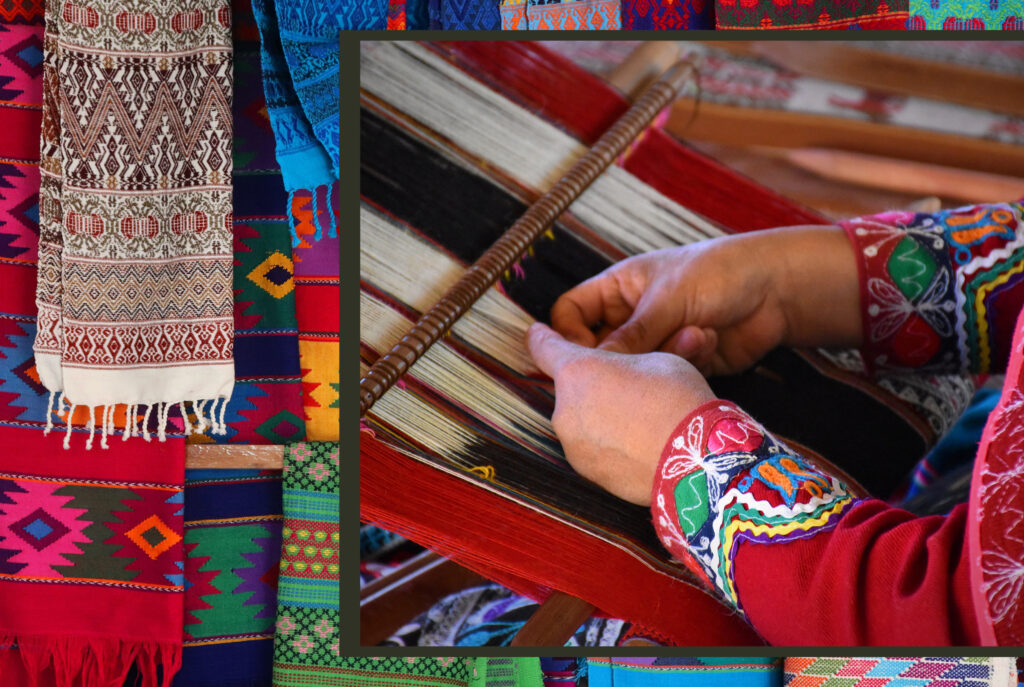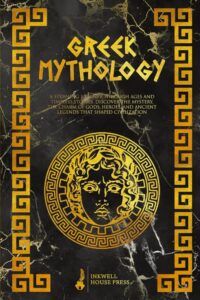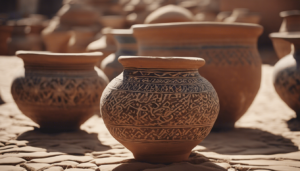Weaving has been an integral component of human culture for millennia, with ancient techniques exemplifying the creativity and craftsmanship of various civilizations. This document examines five distinct types of ancient weaving methods, including backstrap weaving and Navajo weaving, while also exploring their historical significance.
It underscores how contemporary artists are revitalizing these time-honored practices, placing emphasis on sustainability and collaboration with indigenous communities. This exploration invites an appreciation of the rich tapestry of weaving’s past and its vibrant resurgence in the present day.
What Are the Different Types of Ancient Weaving Techniques?
.jpg_00.jpeg)
Ancient weaving techniques represent a significant aspect of human creativity and craftsmanship, showcasing the diverse cultural heritage and textile art of various civilizations.
Notable methods, such as backstrap weaving and tapestry weaving, each embody distinct artistic expressions, traditional patterns, and historical narratives. These traditional practices have profoundly influenced societal structures and have established a foundation for contemporary explorations in textile art and the revival of craftsmanship, contributing to the textile revival movement.
Ultimately, they enhance our understanding of material culture, design aesthetics, and the importance of cultural preservation through these historical techniques.
1. Backstrap Weaving
Backstrap weaving is a traditional method utilized by various cultures, wherein the weaver employs a simple loom secured to their body, enabling the creation of intricate fiber art that reflects cultural identity.
This age-old technique has origins spanning thousands of years, with roots in regions such as Mesoamerica and the Andes, where it has developed into a distinct art form. Practitioners make use of locally sourced fibers and eco-friendly materials, often dyed with natural materials, to produce textiles that serve both functional purposes and convey narratives of their heritage, beliefs, and community values through storytelling through textiles.
Each woven piece holds personal significance, frequently symbolizing rites of passage, social status, or communal unity. The craftsmanship involved is highly regarded, with knowledge and skills passed down through generations, establishing a vital connection to cultural history and continuity in many indigenous societies.
2. Tapestry Weaving
Tapestry weaving is a distinguished textile art form that involves the creation of intricate patterns and images through the interlacing of colored threads, frequently conveying narratives or depicting historical events.
This craft has its origins in ancient civilizations, with notable examples tracing back to early Egyptian and Greek societies, where tapestries served not only decorative purposes but also functional roles, such as providing insulation.
Throughout the Middle Ages, the evolution of weaving patterns was significant, with tapestries emerging as a prominent medium for artistic storytelling. Renowned artists, such as Pieter de Hooch and Jean-Baptiste woven, utilized this technique to articulate narratives and cultural heritage, often reflecting the social and political climates of their respective eras.
As a lasting symbol of cultural identity, tapestry weaving continues to engage audiences by seamlessly integrating artistry with craftsmanship.
3. Inkle Weaving
Inkle weaving is a technique that produces narrow woven bands, which are commonly utilized for belts, straps, and decorative elements, thereby showcasing the weaver’s skill in pattern design and craftsmanship.
This ancient art form is characterized by its straightforward setup, typically involving a portable loom, making it accessible to both beginners and experienced textile artists.
The practicality of inkle weaving is evident in its versatility; these bands can fulfill various functions, ranging from the creation of durable laces for shoes to the embellishment of garments or even the crafting of personalized gifts.
The aesthetic appeal of inkle weaving lies in the vibrant colors and intricate patterns that can be achieved through various weaving techniques, allowing each piece to reflect the individuality of the weaver.
Additionally, the rhythmic process of creating these exquisite textiles can be meditative, offering a gratifying blend of artistry and utility.
4. Navajo Weaving
Navajo weaving is a significant tradition noted for its distinctive patterns and vibrant colors, deeply embedded in the cultural heritage and textile history of the Navajo people.
These intricate weavings transcend mere decorative art; they encapsulate a profound connection to the land, spirituality, and cultural narratives that are unique to the community. The weavers employ time-honored techniques, ranging from the straightforward yet effective methods of spinning yarn to the intricate process of loom weaving. Each step is imbued with personal and historical significance.
Symbolism is a crucial element, as motifs frequently represent aspects of nature, ancestral stories, or spiritual beliefs, serving as visual interpreters of identity and tradition, enhancing the weaving identity of the community.
For these weaving communities, each crafted piece is not merely a fabric but a testament to resilience, creativity, and collective memory, solidifying their place within the broader tapestry of Navajo culture.
5. Loom Weaving
Loom weaving represents a fundamental technique in textile production, utilizing various types of looms to create fabrics that embody both artistry and craftsmanship.
The diversity of looms—ranging from traditional handlooms to shuttle looms and Jacquard looms—enables artisans to manipulate threads with precision, resulting in unique patterns and textures that contribute to the weaving design aesthetics.
Each type of loom serves a specific purpose; for example, handlooms are often preferred for their capacity to facilitate intricate designs that reflect cultural heritage. In contrast, Jacquard looms provide advanced capabilities for the automatic production of complex patterns, demonstrating the innovation in textile techniques.
This array of techniques not only enhances artistic expression and creative weaving but also supports sustainable fashion by minimizing waste through efficient material utilization and promoting local craftsmanship in weaving communities.
By prioritizing these methods, the fashion industry can advance eco-friendly practices and sustainable practices while simultaneously preserving traditional skills, fostering a revival of ancient techniques.
Why Are These Techniques Considered Ancient?
.jpg_01.jpeg)
Ancient weaving techniques are regarded as such due to their enduring traditions, which span thousands of years and serve as essential components of cultural preservation and textile history across various civilizations.
These techniques encompass distinct methods of loom weaving, tapestry creation, and intricate knotting, all of which have been transmitted through generations, reflecting the unique identities and narratives of diverse cultures, contributing to the preservation of cultural dialogue and textile storytelling.
The evolution of these practices, from basic handlooms in early societies to the sophisticated mechanized processes developed during the Industrial Revolution, represents a remarkable journey of innovation, adaptation, and artistic expression.
The importance of these historical methods extends beyond mere craftsmanship; they play a crucial role in fostering a sense of belonging and continuity, encouraging younger generations to connect with their heritage and ensuring that these time-honored traditions remain vibrant in an increasingly globalized world.
How Have Modern Artists Revived These Techniques?
Contemporary artists have adopted ancient weaving techniques as a means of revival, effectively integrating these practices into modern art and artistic innovation, fostering a weaving revival through contemporary design and textile innovation.
This approach not only promotes textile sustainability but also supports the preservation of cultural heritage and craftsmanship diversity, reinforcing the social impact of art and culture.
1. Incorporating Traditional Designs
Incorporating traditional designs into modern textiles enables artists to honor ancient craftsmanship while simultaneously advancing the boundaries of textile innovation and contemporary craftsmanship.
This creative fusion is evident in the works of artists such as Kiff Slemmons, who skillfully integrates traditional Navajo patterns with contemporary weaving techniques, effectively narrating a story that connects diverse cultures and historical periods.
Similarly, Anni Albers is renowned for her innovative approach that merges Bauhaus principles with folk patterns, demonstrating how ancient aesthetics can inform and enhance modern artistic practices in textiles.
Moreover, artists like Nanna van Blaaderen adopt a distinctive strategy by utilizing eco-friendly materials, thereby not only preserving traditional methods but also addressing contemporary sustainability challenges within the textile industry.
2. Using Sustainable Materials
The incorporation of sustainable materials and natural fibers in contemporary weaving practices not only honors ancient traditions but also aligns with the increasing emphasis on textile sustainability and eco-friendly artisanal methods, fostering weaving as art and cultural preservation.
By adopting these time-honored techniques, artisans are actively preserving cultural heritage while simultaneously showcasing how sustainable choices can be both aesthetically pleasing and practical. The dedication to utilizing organic dyes and locally sourced fibers signifies a return to a period when craftsmanship flourished without the detrimental environmental impacts associated with synthetic alternatives.
These practices not only promote biodiversity but also contribute to the establishment of a more ethical fabric industry. As consumers increasingly seek transparency and accountability, the integration of traditional and modern methods underscores the significance of sustainability in supporting both environmental integrity and local communities, fostering modern fiber art and artistic collaboration.
This synthesis encourages innovation while paying homage to the foundational principles of craftsmanship and cross-cultural techniques in weaving traditions.
3. Collaborating with Indigenous Communities
Collaborating with indigenous communities provides modern artists with invaluable insights into the cultural identities and traditional techniques, such as loom weaving and fiber art, that have historically shaped their weaving practices.
These partnerships not only celebrate the rich heritage of indigenous craftsmanship but also facilitate meaningful exchanges, fostering textile education and community engagement that benefit both parties involved. For example, a recent project successfully united contemporary textile artists with indigenous weavers, culminating in a series of collaborative installations that illuminate the unique narratives behind traditional patterns and motifs.
This artistic fusion enhances the understanding of cultural narratives while simultaneously revitalizing ancient techniques and textile traditions. It demonstrates that the intersection of modern creativity and indigenous knowledge can yield a vibrant tapestry of art. Such collaborations serve as a powerful example of how honoring historical practices while innovating for the present can result in significant expressions of identity and community, contributing to cultural preservation and weaving identity.
4. Combining Ancient Techniques with Modern Technology
The integration of ancient weaving techniques with modern technology has opened up exciting new possibilities in textile innovation, fostering opportunities for experimentation, creative expression, and contemporary design.
By incorporating digital tools, such as digital weaving, artists are now able to expand the boundaries of traditional practices, looking into complex patterns and textures that were previously challenging to achieve. This synergy enhances not only the aesthetic appeal but also encourages creators to engage in a meaningful dialogue between historical traditions and contemporary advancements, promoting artistic techniques and weaving design.
Furthermore, advancements in materials, such as sustainable fabrics and smart textiles, enable designers to create unique pieces that align with modern values. This fusion of heritage and innovation cultivates a dynamic environment for artistic exploration, resulting in outcomes that are both visually striking and profoundly significant, reflecting the importance of fiber sustainability and eco-friendly materials.
What Are the Benefits of Reviving Ancient Weaving Techniques?
.jpg_10.jpeg)
Reviving ancient weaving techniques presents several advantages, including the preservation of cultural heritage and art history, the enhancement of community enablement, and the enrichment of contemporary artistic practices and textile craftsmanship.
1. Preserving Cultural Heritage
Preserving cultural heritage through the revival of ancient weaving techniques is essential for ensuring that traditional knowledge and craftsmanship techniques are transmitted across generations. This important endeavor not only safeguards the narratives and skills inherent in each fabric but also reinforces the identity of communities that rely on these practices, promoting cultural dialogue and weaving societies.
As artisans commit themselves to the use of time-honored artisanal methods, they establish connections with the rich history of textiles, where patterns and colors convey meanings that extend beyond mere decoration—they embody heritage, craftsmanship diversity, community, and resilience.
Through participation in weaving workshops and collaborative projects, contemporary craftspeople revitalize these traditions, thereby fostering a deeper appreciation for cultural artisanship and weaving traditions.
Such initiatives not only sustain the art of weaving but also inspire future generations to embrace and celebrate their cultural roots, ensuring intergenerational skills and weaving history are preserved.
2. Promoting Sustainable Practices
Promoting sustainable practices in the revival of ancient weaving techniques not only supports artisans but also mitigates the environmental impact of the textile industry, emphasizing the role of fiber crafts and textile sustainability.
By incorporating these time-honored methods and craftsmanship revival, contemporary textile production can significantly reduce waste and utilize natural materials that are frequently overlooked in modern manufacturing processes.
Embracing such artisan techniques not only pays homage to the rich cultural heritage of textile crafts but also fosters a more conscientious approach to consumption and production, integrating textile projects and community weaving.
As the fashion industry endeavors to address its carbon footprint, these traditional practices present a viable pathway toward a more ethical future, where sustainability and artistry coexist, resulting in textiles that are both aesthetically pleasing and environmentally responsible, highlighting the social impact and art and culture.
3. Creating Unique and Authentic Artworks
The revival of ancient weaving techniques facilitates the creation of unique and authentic artworks that embody creative expression and rich cultural narratives, contributing to artistic traditions and storytelling through textiles.
These textiles not only demonstrate the skill and craftsmanship of the artisans but also reflect the deep-rooted traditions and stories of the communities from which they originate. Each piece, whether a vibrant tapestry or a delicately woven garment, serves as a canvas for artistic innovation and weaving aesthetics, inviting viewers to appreciate the subtleties of texture, color, and form.
In this manner, weaving transcends mere functionality, evolving into a revered art form that communicates emotions and histories, while fostering a dialogue between the past and contemporary artistic practices, emphasizing visual storytelling and textile narratives.
4. Connecting to Ancient Traditions
Connecting to ancient traditions through the revival of weaving techniques fosters a deeper appreciation for historical practices and the legacies they leave behind, promoting weaving communities and artistic inspiration.
Such creative endeavors not only showcase the intricate skills developed over centuries but also illuminate the cultural narratives embedded within each textile. By exploring the artistry behind these practices, individuals gain valuable insights into the broader artistic heritage that shapes communities, contributing to weaving influences and cultural contexts.
This interconnectedness enriches the artistic landscape, encouraging contemporary artisans to draw inspiration from age-old methods and promoting a dialogue between the past and the present, supporting textile explorations and weaving as art.
Ultimately, recognizing the historical significance of weaving cultivates a greater understanding of its role in preserving cultural identities and promoting sustainable practices within the contemporary art scene, highlighting art collaborations and textile diversity.
Frequently Asked Questions
What is the significance of reviving ancient weaving techniques in modern art?
.jpg_11.jpeg)
By reviving ancient weaving techniques, modern artists are able to pay homage to traditional art forms and preserve cultural heritage, fostering artistic collaboration and community art initiatives. It also allows for the incorporation of unique and intricate designs into contemporary art.
How have modern artists adapted ancient weaving techniques in their artwork?
Modern artists have combined traditional weaving techniques with modern materials and processes, such as using recycled materials or incorporating digital technology, to create innovative and unique pieces of art, reflecting weaving revival and contemporary textiles.
Why are ancient weaving techniques considered a dying art form?
With the rise of industrialization and mass production, traditional weaving techniques have been replaced by more efficient and cost-effective methods. As a result, the knowledge and skills required for these techniques have been slowly disappearing, impacting fiber community and craftsmanship education.
What are some challenges faced by modern artists when reviving ancient weaving techniques?
Some challenges include finding skilled artisans who still possess the knowledge and techniques, as well as sourcing high-quality materials that may no longer be readily available. There may also be difficulties in adapting and modernizing the techniques to fit contemporary art forms, affecting craftsmanship diversity and textile artisans.
How does reviving ancient weaving techniques contribute to sustainability?
By using traditional weaving techniques, modern artists are promoting sustainable practices and reducing the environmental impact of mass production, contributing to fiber sustainability and eco-friendly materials. They are also preserving cultural heritage and supporting local communities and economies that rely on these techniques.
What impact does the revival of ancient weaving techniques have on the art world?
The revival of ancient weaving techniques has brought a new level of diversity and depth to the art world, inspiring artistic inspiration and weaving design. It has also sparked collaborations and cross-cultural exchanges between modern artists and traditional communities, enriching the global art scene and fostering artist-led projects and artist residencies.

My name is Bruno, I have been a writer for 5 years and I work with website creation. My goal is to provide true information to readers. In fact, on this site I write about cultures and traditions, which I have been passionate about since childhood.




